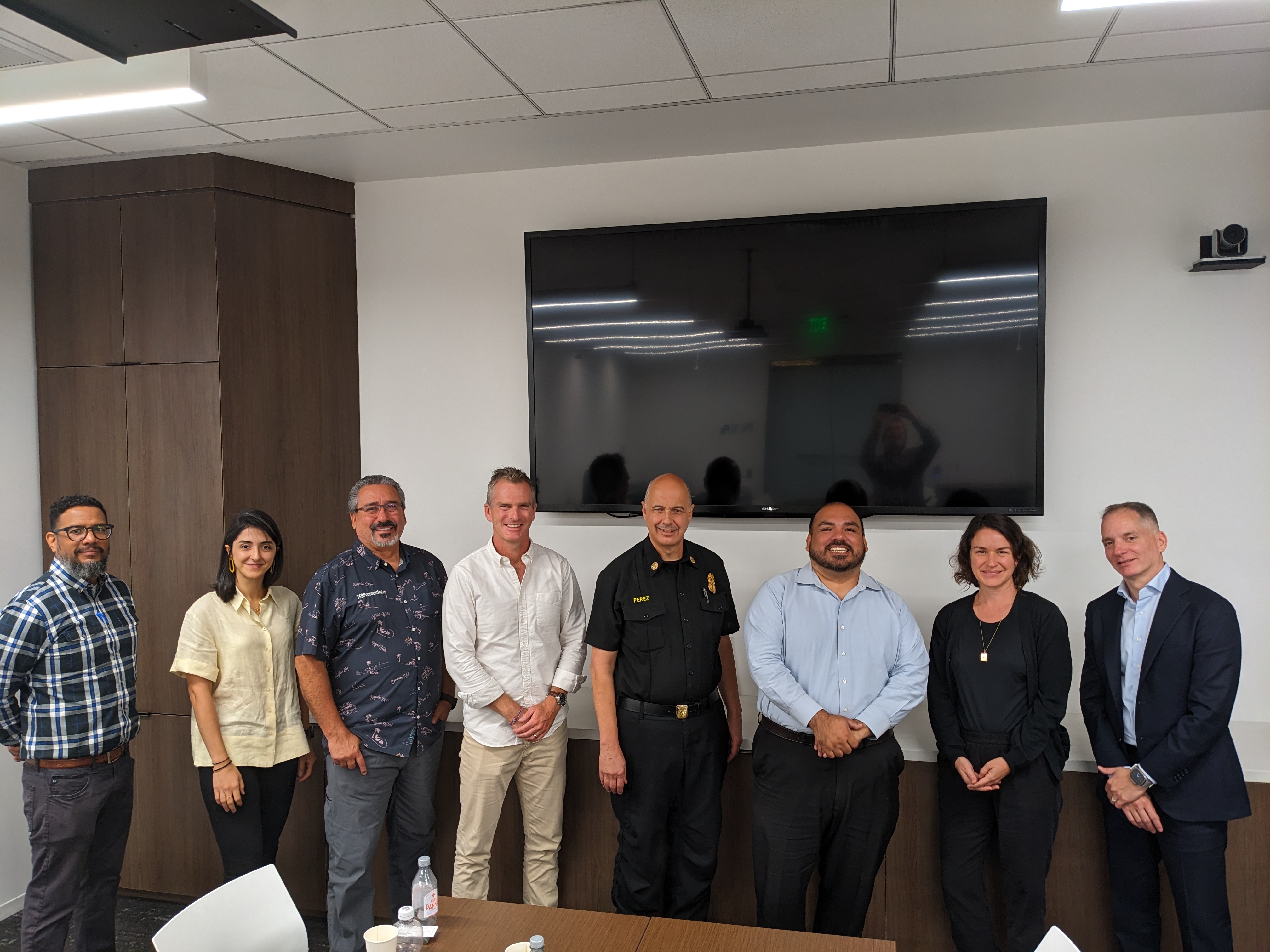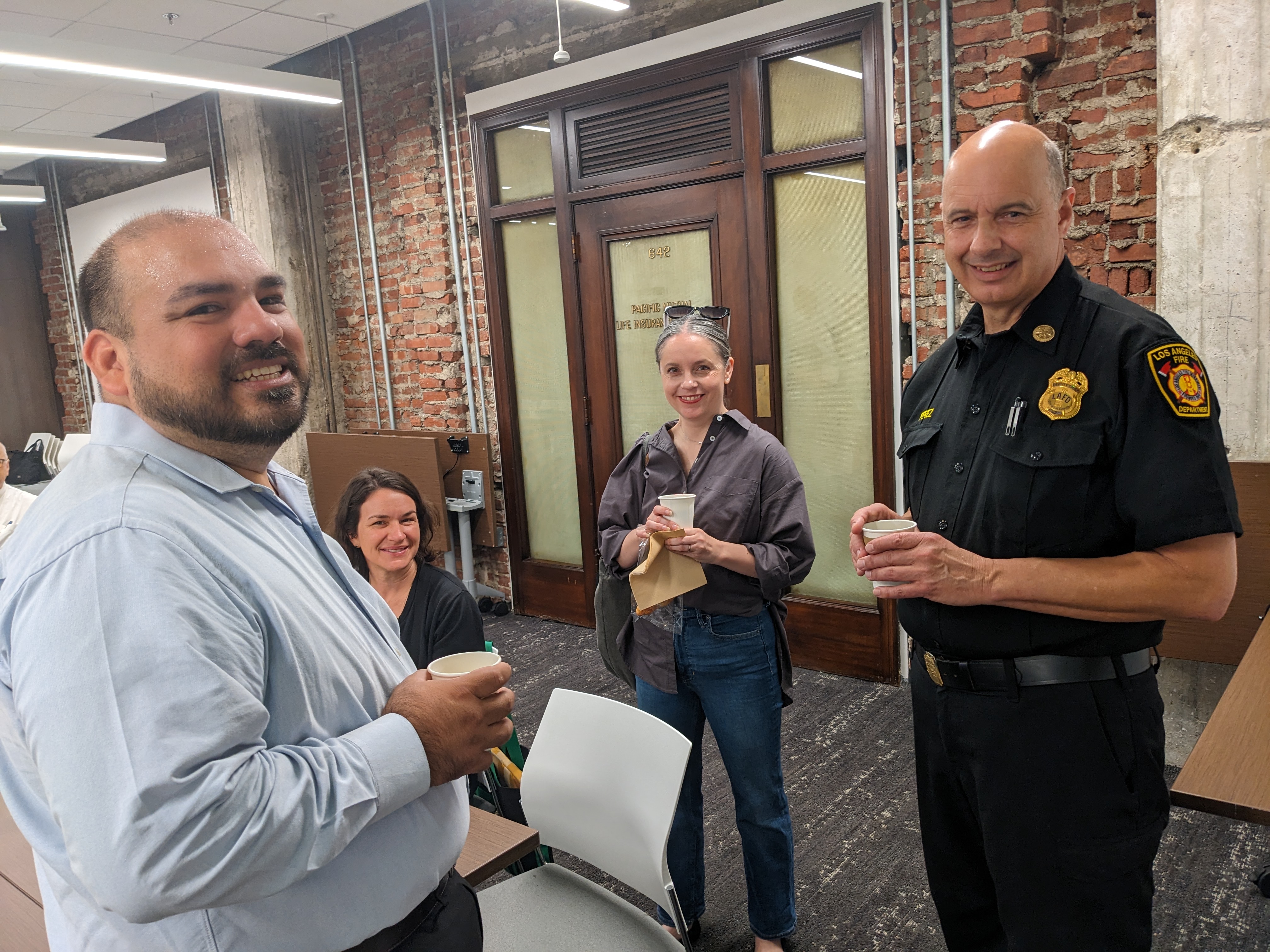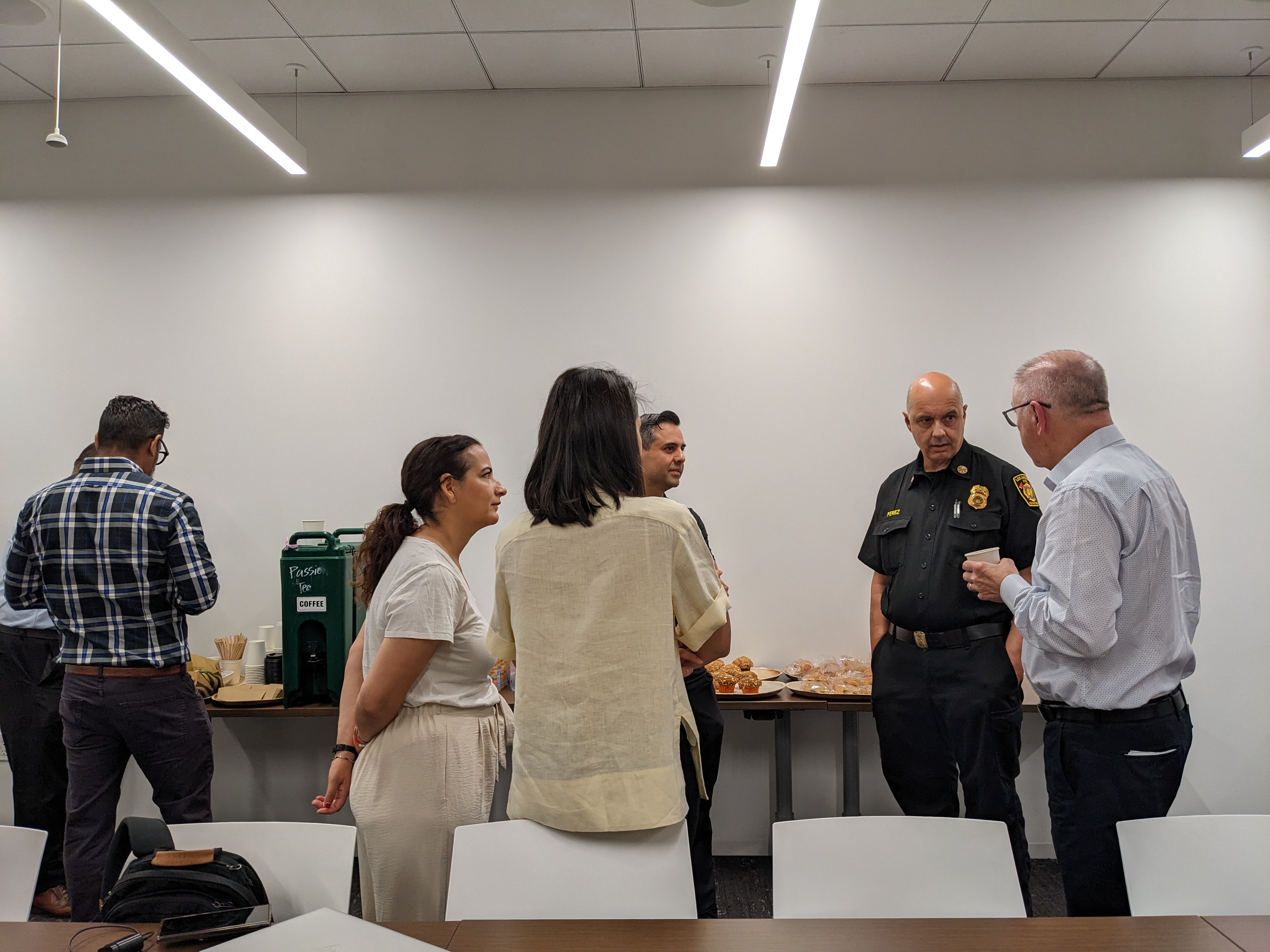From the desk of Will Wright, Hon. AIA|LA
Director of Government & Public Affairs



FROM AIA NATIONAL
AIA Outlines Top Election Priorities
WASHINGTON – September 11, 2024 – Yesterday the American Institute of Architects (AIA) shared its top election priorities for the next Congress and Presidential Administration. In this election, AIA will advocate for these top priorities covering housing, climate, resiliency, taxes, contract parity, design freedom for federal buildings, student loans, and historic preservation.
“Architects across the country are keen to see greater progress toward key goals related to the built environment and our businesses,” said 2024 AIA President, Kimberly Dowdell, AIA, NOMAC. “Our top election priorities highlight critical issues including the need for increased investment in affordable housing, aggressive climate action measures, enhanced resiliency against natural disasters, and sound tax policies.”
AIA’s election priorities highlight top federal policy issues and guide AIA’s advocacy work at the federal, state, and local levels. AIA included pursuing legislation that creates healthy communities, affordable housing, and equitable development in its list of top election priorities.
Dowdell added, “AIA calls on the candidates as well as the incoming new Congress to listen to architects as experts on the forefront of designing a more sustainable future. Through these priorities, AIA’s members will continue to move the built environment forward.”
CLICK HERE TO READ AIA’s Top Election Priorities for the Next Administration and Congress.
FROM AIA CALIFORNIA
// AIA California, Working for You
Greetings from the AIA California Office,
Across the state we hear from members – whether working in large municipalities or small communities – the #1 frustration is with the permitting and entitlement process. It takes too long, it’s too expensive, and the inconsistency across neighboring municipalities adds unnecessary complexity, and directly impacts your bottom line.
I’m pleased to report, AIA California has been invited to provide input to the California Assembly’s Select Committee on Permitting Reform. This is a very broad landscape, so to be effective we are strategically focusing on a handful of topic areas. You could help us validate priorities by sharing both barriers and opportunities for change that can help address the state’s significant housing shortage.
Based on input over the last year, our current short list includes:
– condominium reform – so important for missing middle housing
– essential code and policy changes that enable commercial-to-housing conversions
– adjusting the height limit that triggers commercial prevailing wage requirements
– establishing a state-level code appeal body that would lead to greater predictability and consistency
– expanding the scope of projects that can use the California Residential Code (CRC)
Of course, we realize it’s not just the permitting process that needs attention. The regulatory environment in California has created a spiderweb of “under the counter” regulations and local policies that make the design and delivery of architecture difficult. For those local municipalities that are limiting your ability to practice- what observations or insights do you have that AIA California can advocate for on your behalf? Share your insights here.
These conversations are just the start of a larger effort to create a compendium of case studies across California – highlighting the processes, individuals, and programs that have made a positive difference. You can share a story about best practices that work well here.
As we distill this information from across the profession, we also are making sure architects have a “seat at the table”. Architects are after all key stakeholders on all issues that touch the built environment, and being engaged at all levels is an important way AIA California is Working for You.
_______________________________________________
Nicki Dennis Stephens, Hon. AIA, LEED Green Assoc.
Executive Vice President
The American Institute of Architects California
On Adaptive Reuse…
From AIA California’s Consultant Michael F. Malinowski, FAIA:
As you know, there is a growing interest in converting underused commercial buildings to residential use around the country. The International Existing Building Code (IEBC) is designed for adaptive reuse projects, but the challenges are complex and diverse. In June 2024, the International Code Council formed an Adaptive Reuse Working Group to consider how the IEBC might better support office-to-residential conversions. The survey linked below has been designed to provide input to these efforts from design professionals and other subject matter experts.
We hope you can take about 15 minutes to give your input, and then share this survey link with colleagues and cohorts active in this emerging project area. You can also opt-in to see the anonymized results and/or get updates and other opportunities to participate.
Thanks in advance for your consideration.
AIA California’s Climate Action Story
AIA California has been actively engaged in climate action activities and has a robust group of members and staff leading the way in education, communication, and advocacy initiatives; here’s a brief overview of our efforts.
After the AIA California Board of Directors took a position in July 2019 to proactively address the climate emergency and support the Zero Code, we hosted the Climate Action Summit in the fall of 2019 and crafted an action plan.
EDUCATION: Throughout this journey, we’ve worked hard to develop and curate resources for members. AIA CA also sponsored legislation, AB 1010 to require mandatory continuing education for architects in Zero Net Carbon Design. We’ve offered hundreds of hours of free CE content to ramp up ZNC literacy within the profession.
COMMUNICATION: The Climate Action Communications Sub Committee created a series highlighting how architects can take action: “What You Can Do Right Now.”
ADVOCACY: We have been most visible in the advocacy arena by accelerating substantive changes that facilitate carbon reduction. In 2023, we had two BIG WINS that changed the trajectory of design and construction in California. We began shaping the code landscape for existing buildings over four years ago, but code change is a long and rigorous process.
First, we championed the group of state agencies and industry partners to amend the California Existing Building Code, adding more design flexibility for architects in pursuing adaptive reuse projects. California adopted seven chapters of the IEBC to reduce barriers to adaptive reuse; adding these chapters introduces two new-to-California compliance paths for these types of projects – Work Area and Performance. They join the Prescriptive path already in effect in California and together, arm architects with more options to design creative solutions. (Note: the Performance Method in the California Existing Building Code is indeed returned to our code books, printed, but not adopted. Local jurisdictions can adopt it if they wish, and I know there are some conversations unfolding along those lines.)
Secondly, we organized the effort to propose the California Building Standards Commission to adopt a statewide, mandatory measure to address embodied carbon. CALGreen now addresses embodied carbon emissions in the construction, remodel, or adaptive reuse of commercial buildings larger than 100,000 sq feet and school projects over 50,000 sq ft.
You can read the full article about these code advocacy efforts here.
Both code changes took effect July 1, 2024, and AIA California is helping members prepare:
- There’s a new Quick Start Guide.
- Here’s an article about all we are doing to help members prepare.
- You can watch a recorded webinar about the new Embodied Carbon measures.
- Have more questions about the new Embodied Carbon measures? Read this FAQ doc.
Lastly, we have also prepared an updated compliance checklist for CALGreen in support of the new code –access that practice tool.
None of this would have been possible without the hundreds of volunteer leaders and the thought leadership of our technical consultant.
ADVOCACY UPDATE!!!
more info to be added asap
AIA|LA CITY LEADERS BREAKFAST RECEPTIONS
For September, we have confirmed three more breakfast receptions. These roundtable discussions allow architects & designers and other community stakeholders to meet directly with key individuals transforming Los Angeles in a roundtable setting to discuss innovative ideas to ensure a healthy, sustainable, and economically competitive future.
We highly encourage your participation!
Ray Sosa – Chief Planning Officer, METRO
Thursday, September 19 (8am – 9:30am) = RSVP HERE.
Peggy M. Quijada de Franke – Associate Vice Chancellor (AVC) of Facilities, Planning and Sustainability, Los Angeles Community College District (LACCD)
Friday, September 20 (8am – 9:30am) = RSVP HERE.
AIA|LA & LACP DESIGN REVIEW SESSIONS
In 2024, we will coordinate thirty-six virtual design review sessions, which will serve as opportunities for architects and designers to help the Los Angeles City Planning’s Urban Design Studio critically review upcoming projects throughout the City.
Upcoming sessions include:
Sep 17, 2024 (10:00 AM)
Oct 1, 2024 (10:00 AM)
Oct 8, 2024 (10:00 AM)
Oct 15, 2024 (10:00 AM)
Join us here w/ RSVP to gain zoom access.
Reach out and get more involved!
FOR MORE INFORMATION:
Will Wright, Hon. AIA|LA
Director, Government & Public Affairs
t: 213.639.0764
e: will@aialosangeles.org
www.aialosangeles.org







